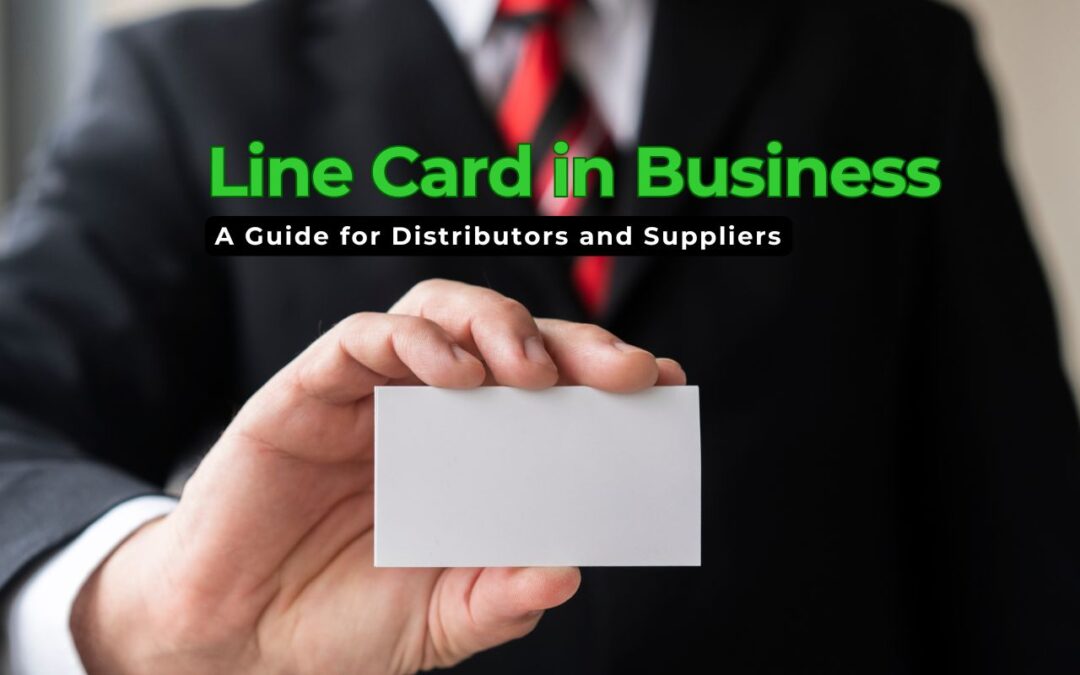In the competitive world of B2B sales, especially in distribution and supply chain management, clear communication and efficient product representation are essential. One tool that helps bridge the gap between suppliers and customers is the line card. If you’re a distributor, manufacturer’s representative, or supplier, understanding the role and value of a line card in business can significantly enhance your marketing and sales efforts.
What Is a Line Card?
A line card is a marketing document or digital page that lists the brands, products, or services a distributor, manufacturer’s rep, or wholesaler represents. Think of it as a compact, well-organized catalog that provides a quick overview of what you offer, highlighting manufacturers, product categories, and sometimes key features.
Line cards are commonly used in industries such as:
- Electronics and electrical components
- Industrial equipment
- HVAC systems
- Construction materials
- IT hardware and software
Why Is a Line Card Important for Distributors and Suppliers?
1. Showcases Your Offerings Clearly
A line card helps summarize what brands and products you carry, making it easier for potential clients or purchasing agents to understand whether your offerings match their needs.
2. Builds Credibility
Including well-known manufacturers or trusted brands on your line card increases trust and authority in the eyes of prospects. It positions your business as a legitimate and capable partner.
3. Speeds Up Sales Conversations
Instead of walking through a long catalog or detailed technical specs, a line card allows your sales team to quickly present relevant options. It’s especially handy during trade shows, cold calls, or B2B meetings.
4. Strengthens Manufacturer Relationships
By properly promoting the brands you represent, you demonstrate professionalism and support to your OEM partners or suppliers—helping maintain strong business relationships.
What Should Be Included in a Line Card?
While content can vary by industry, a strong business line card generally includes:
- Company name and logo
- Contact information (phone, email, website, office locations)
- List of manufacturers or brands represented
- Product categories or industry sectors (e.g., electrical components, HVAC systems)
- Visual logos or icons for each brand (helps with recognition)
- Geographical coverage areas, if applicable (especially for exclusive territories)
- Optional: QR code linking to your full catalog or website
Digital vs. Printed Line Cards
While printed line cards are still common in trade shows and in-person visits, digital line cards have become increasingly popular. They offer benefits like:
- Easy updates and real-time changes
- SEO opportunities when posted on your website
- Shareable via email or social media
- Interactive elements (e.g., clickable links, videos, download options)
Best Practices for Creating a Line Card
Keep It Concise
Avoid overcrowding your line card. Use bullet points, logos, and category headings to make information scannable.
Update Regularly
Brands and partnerships can change. Keep your line card up-to-date to reflect your most current offerings and maintain professional credibility.
Use High-Quality Logos
Visual branding matters. Use clear, high-resolution logos to make your card visually appealing and professional.
Include a Call-to-Action
Don’t forget to encourage action. Whether it’s “Contact us for a quote” or “Visit our website for full specs,” guide the reader toward the next step.
Who Should Use a Line Card?
Line cards are especially useful for:
- Distributors
- Manufacturer’s representatives
- Value-added resellers (VARs)
- Wholesalers
- Service providers who partner with multiple brands
If your business involves representing multiple products or vendors, a line card is a must-have sales and marketing tool.
Conclusion
A well-designed line card in business is more than just a list—it’s a strategic marketing asset. For distributors and suppliers, it clarifies offerings, strengthens relationships with manufacturers, and enhances the customer buying experience. In a world where buyers want fast and clear information, a professional line card can help you stand out from the competition.













